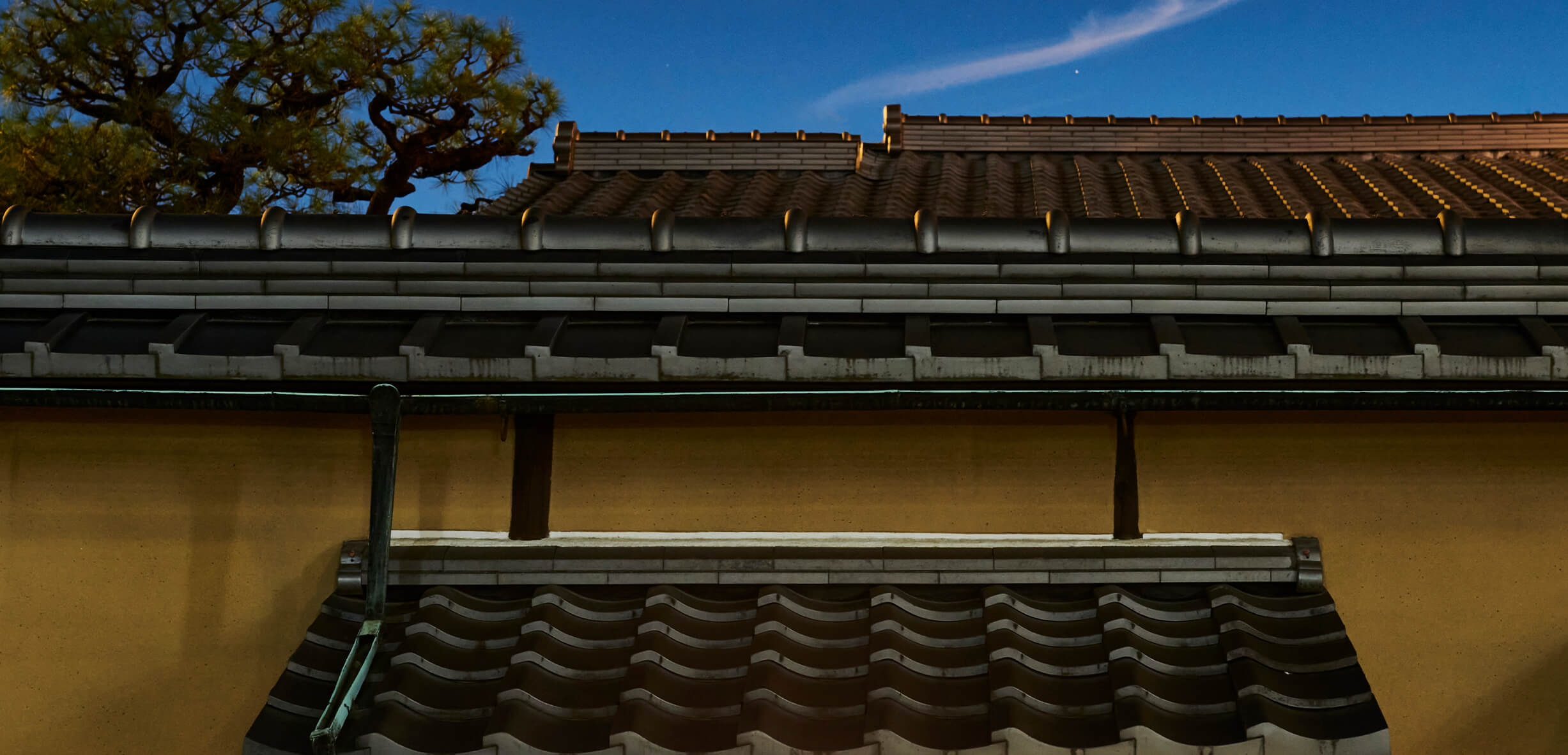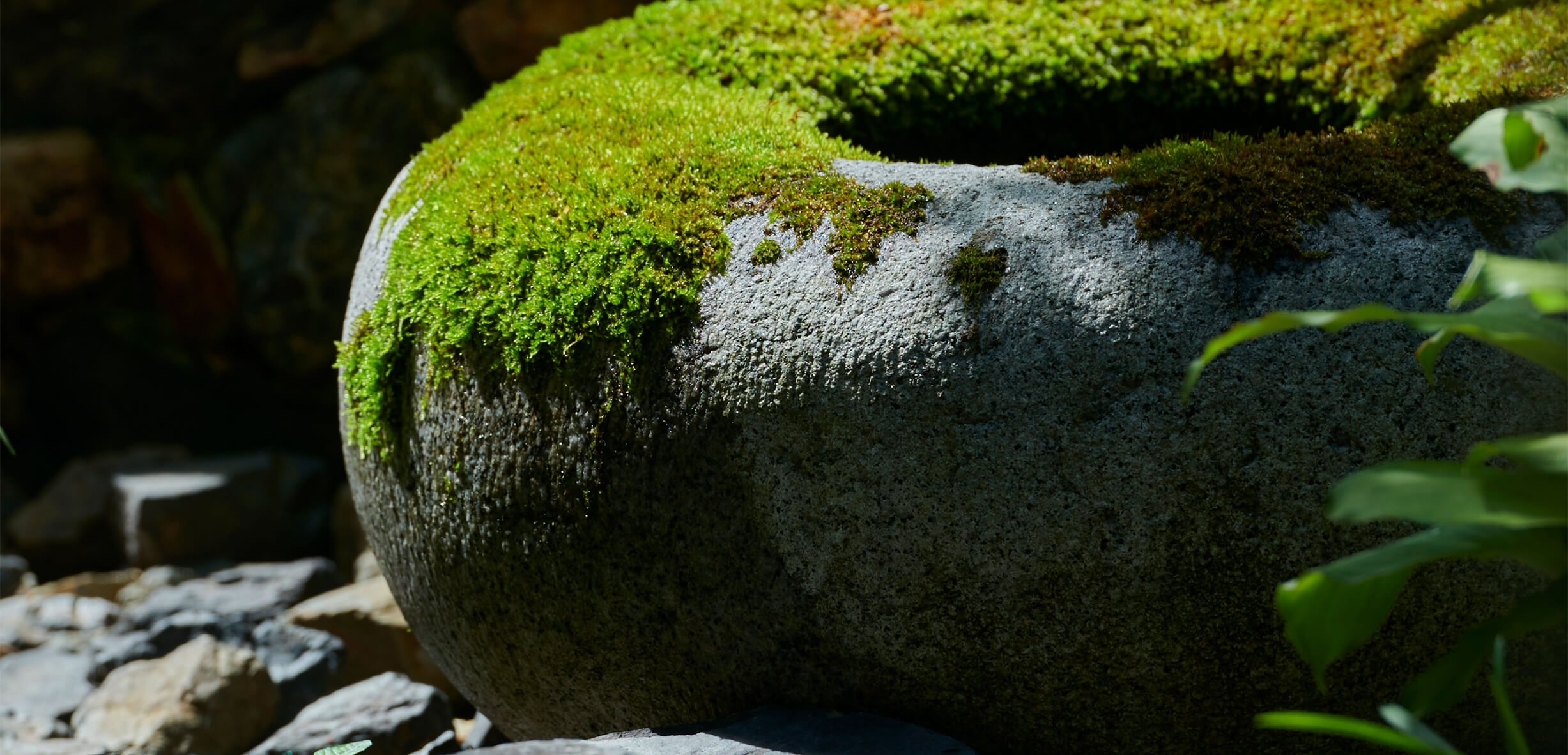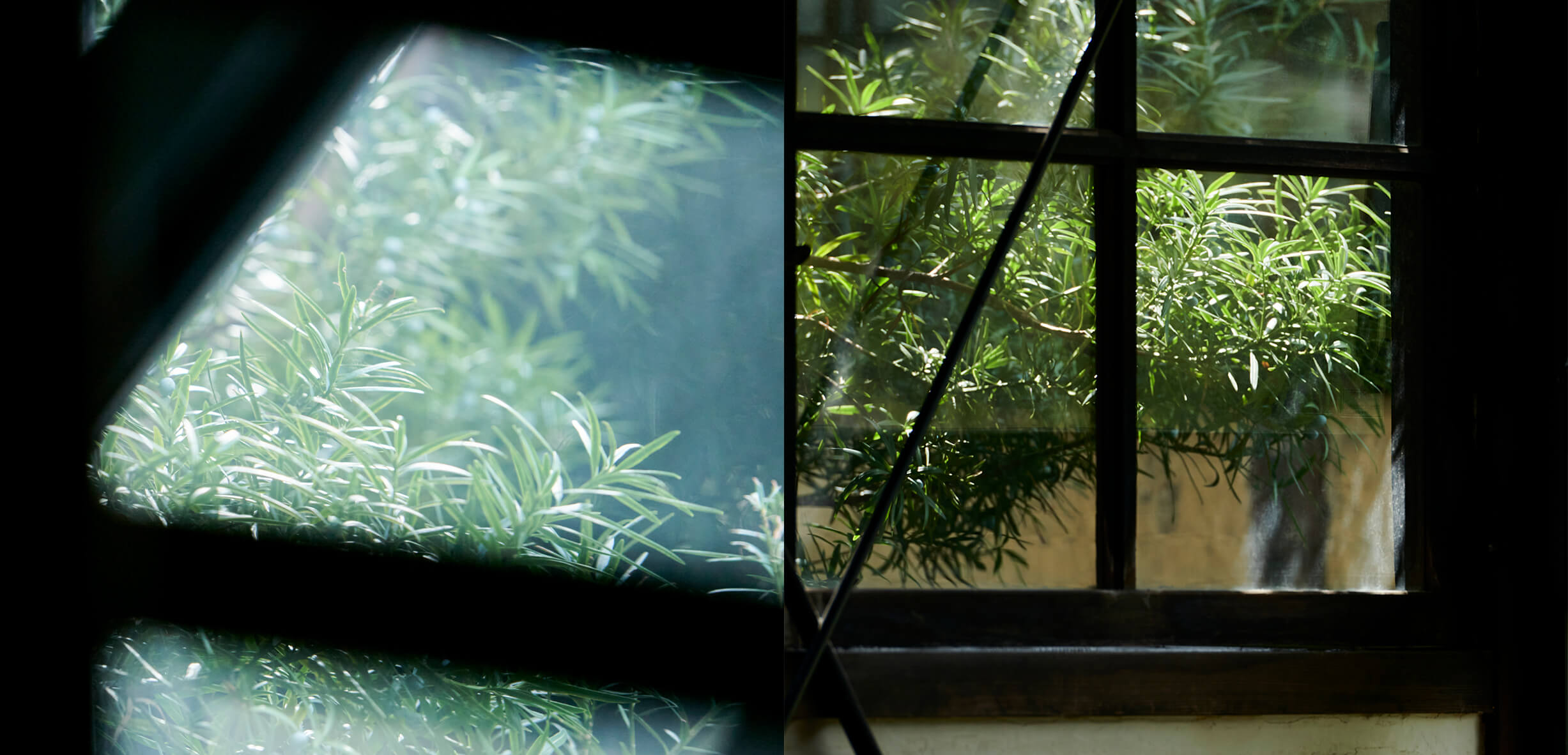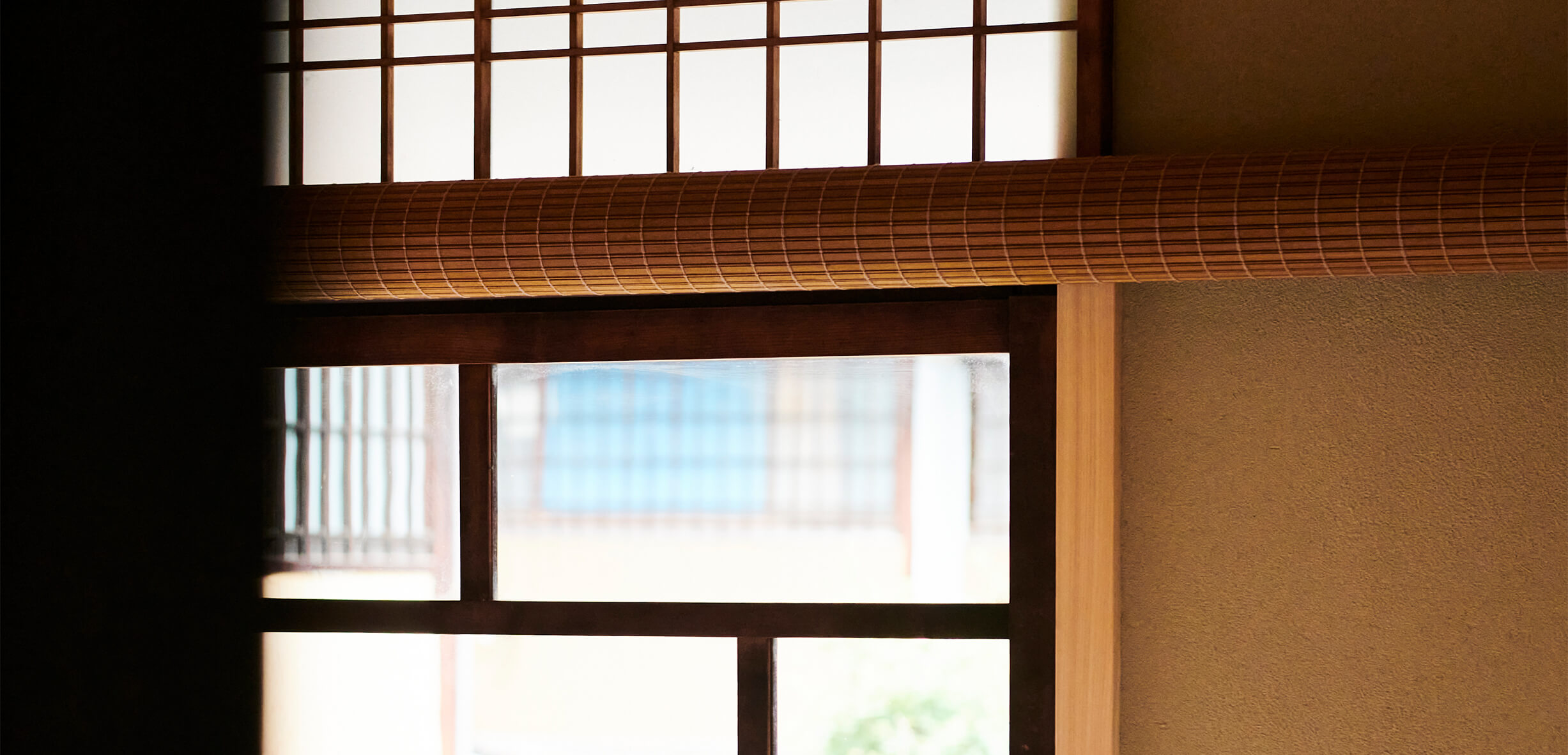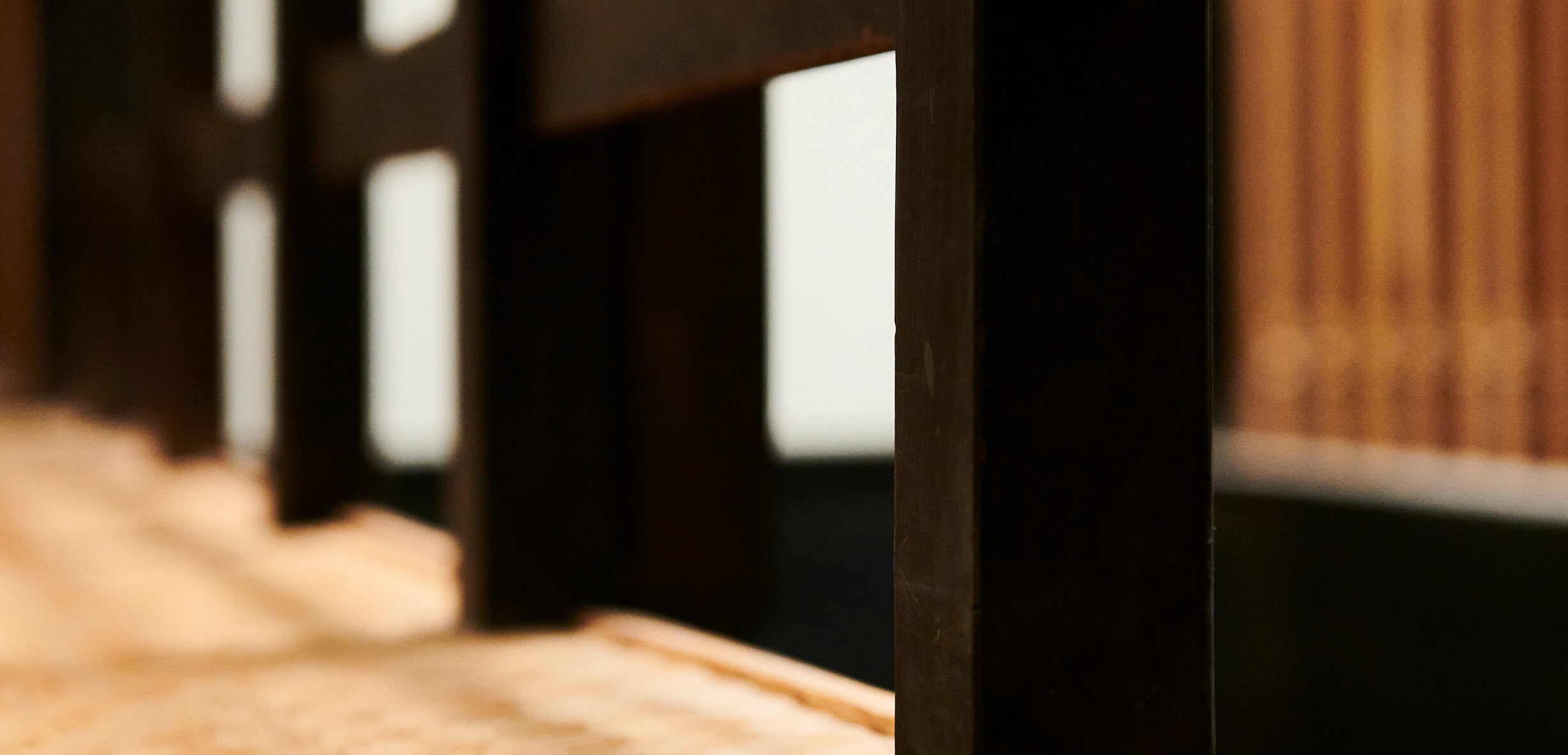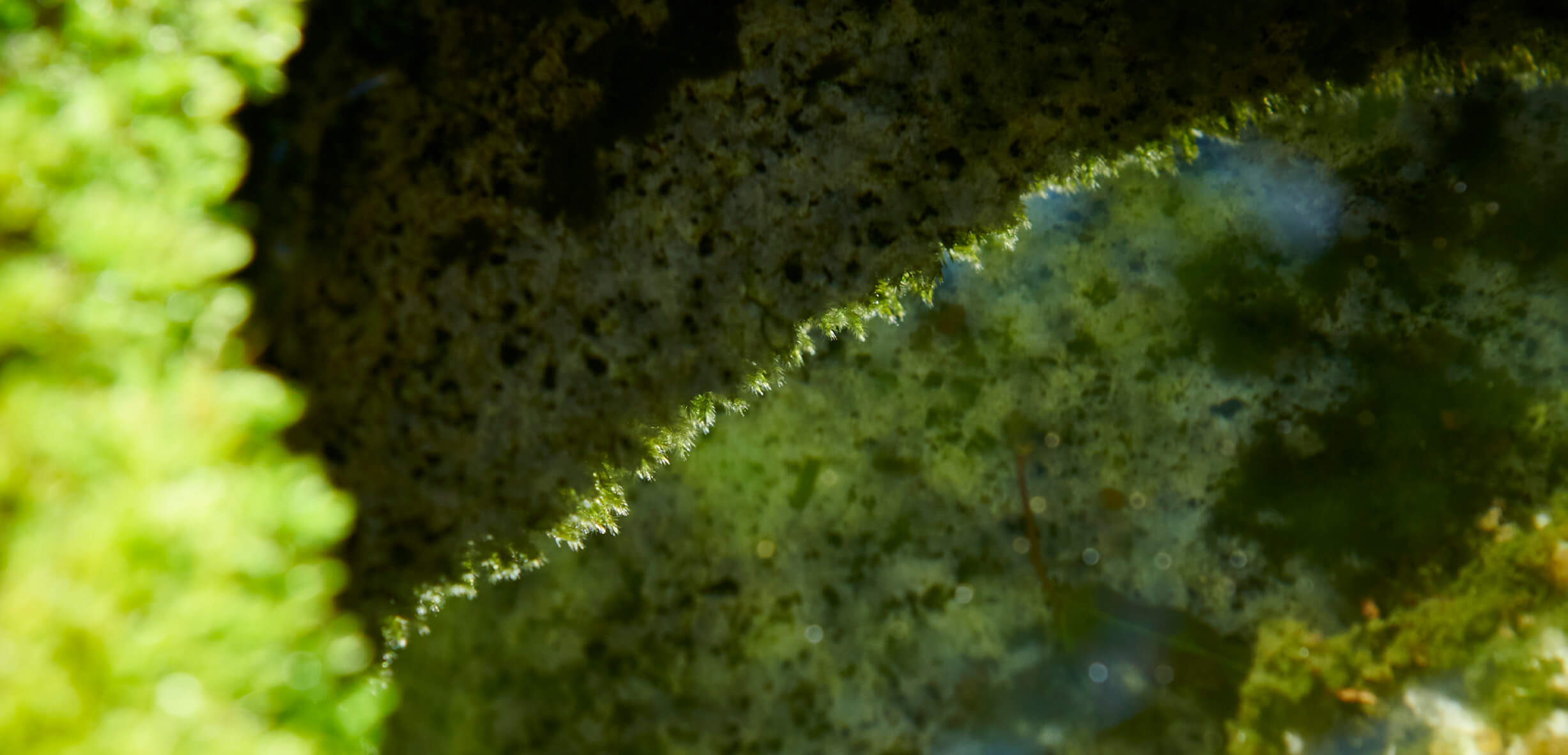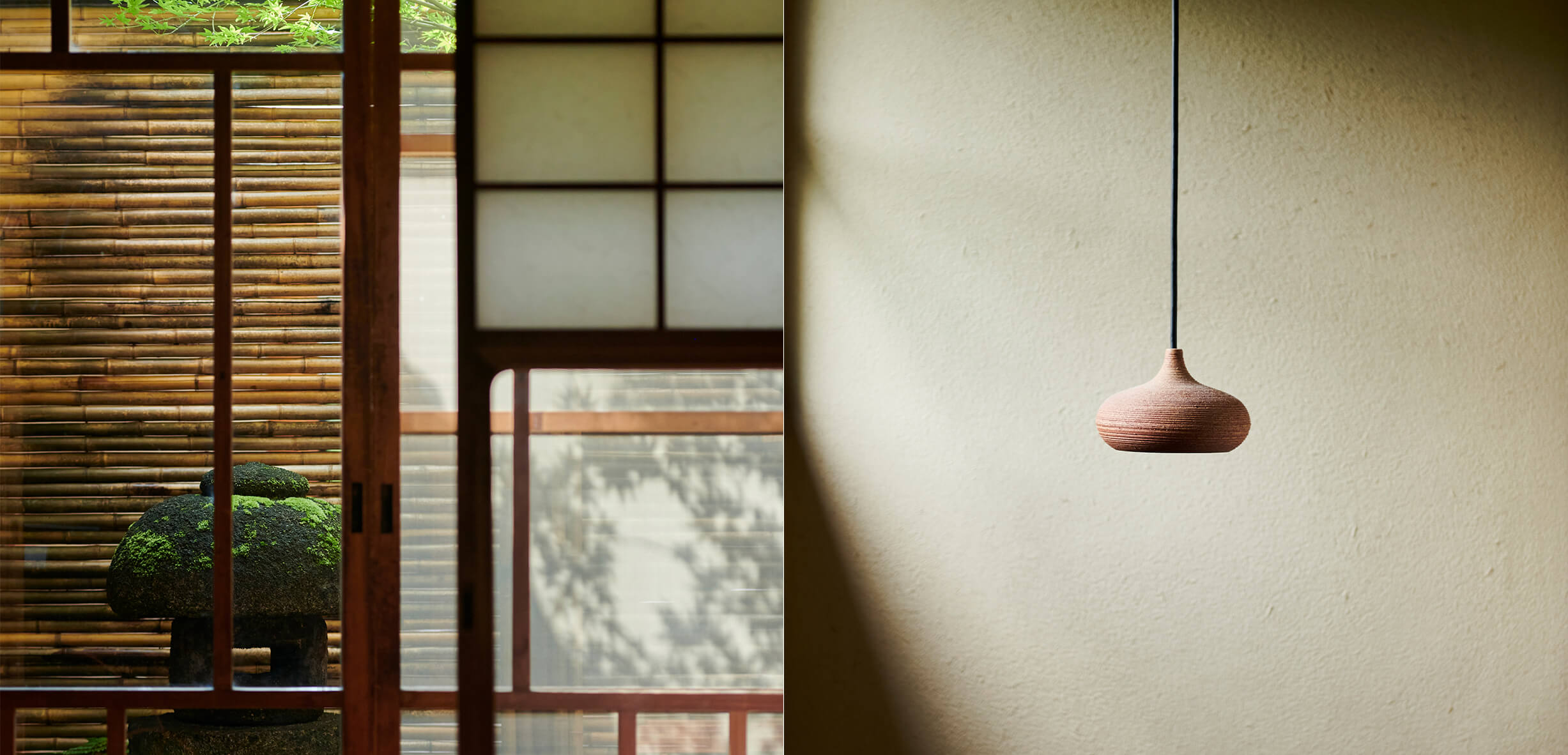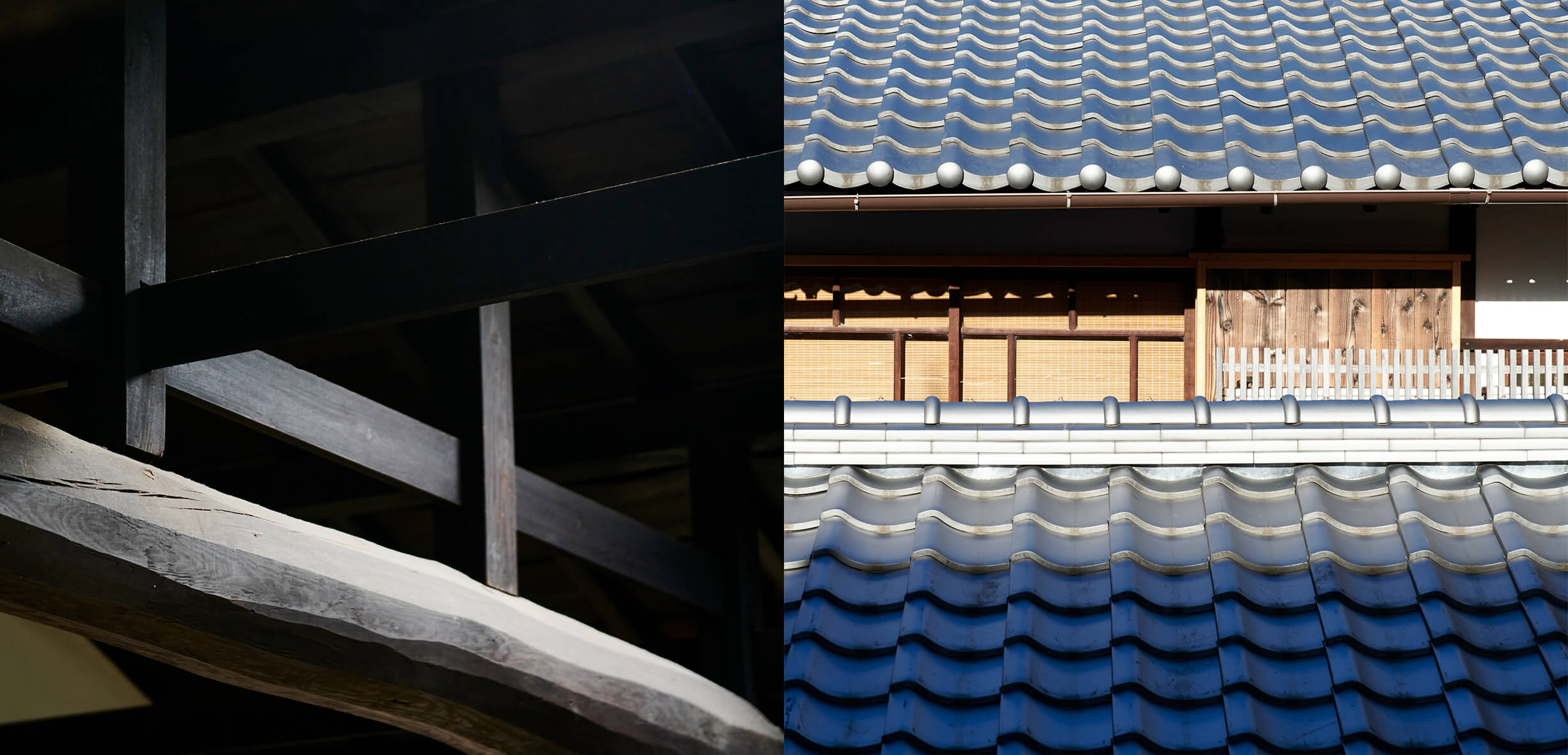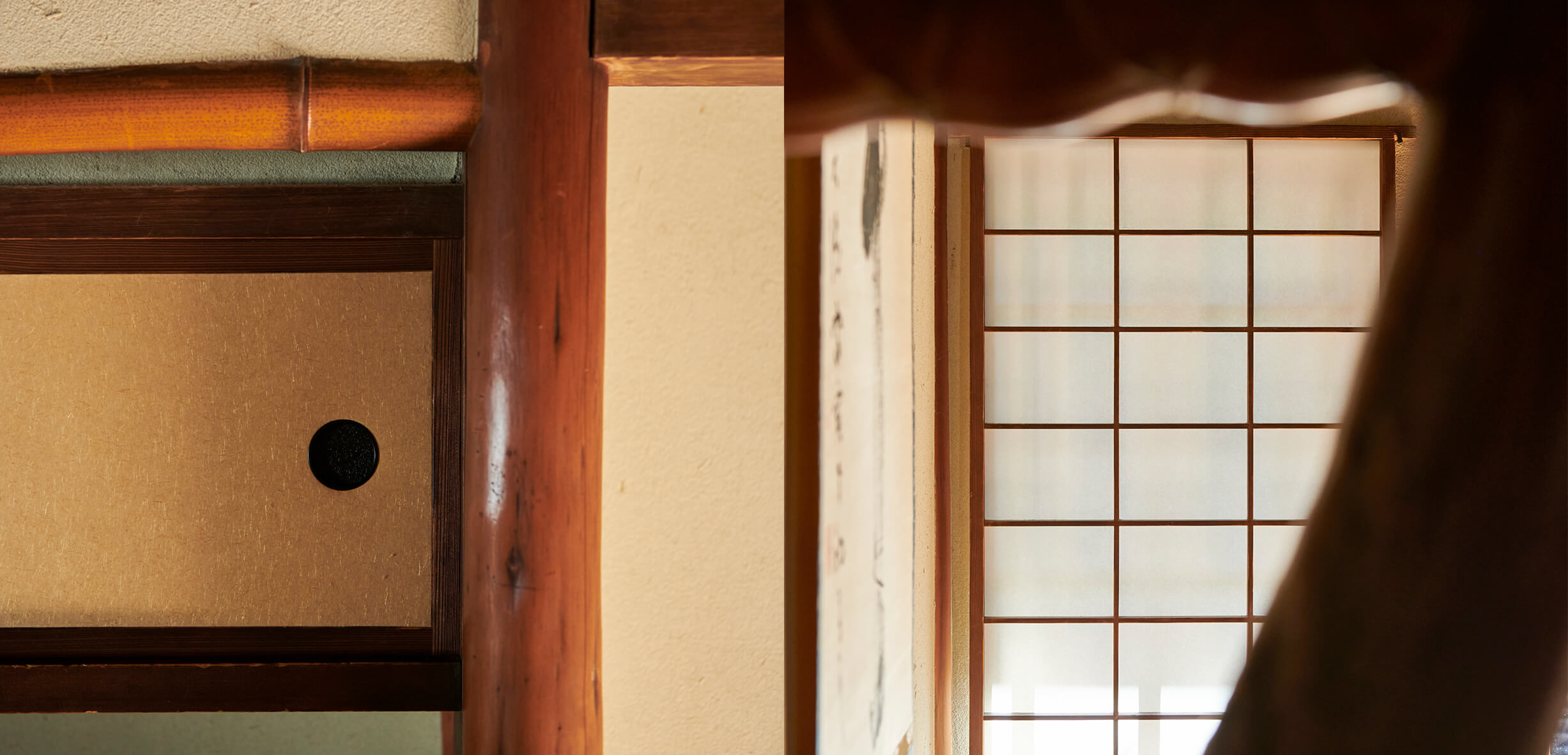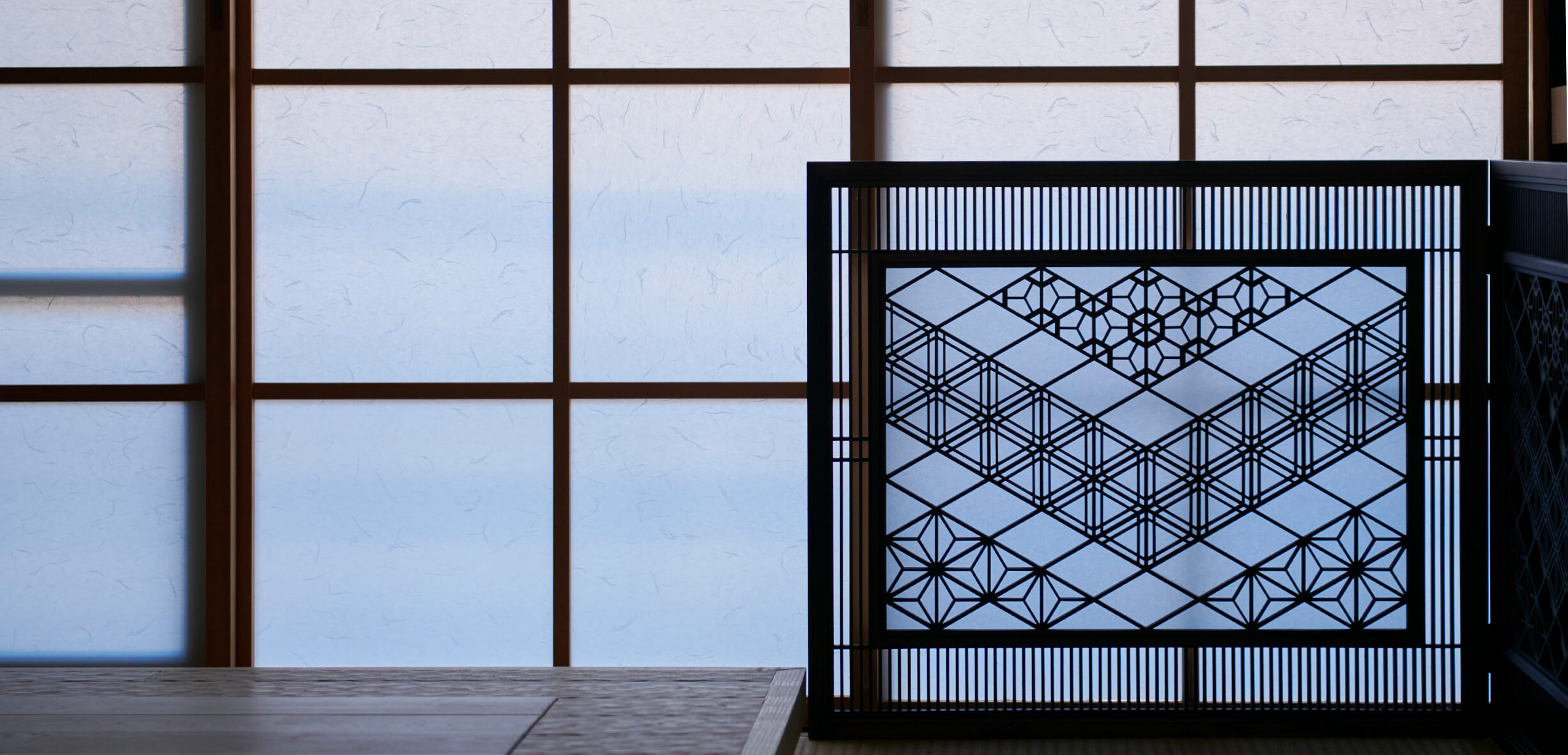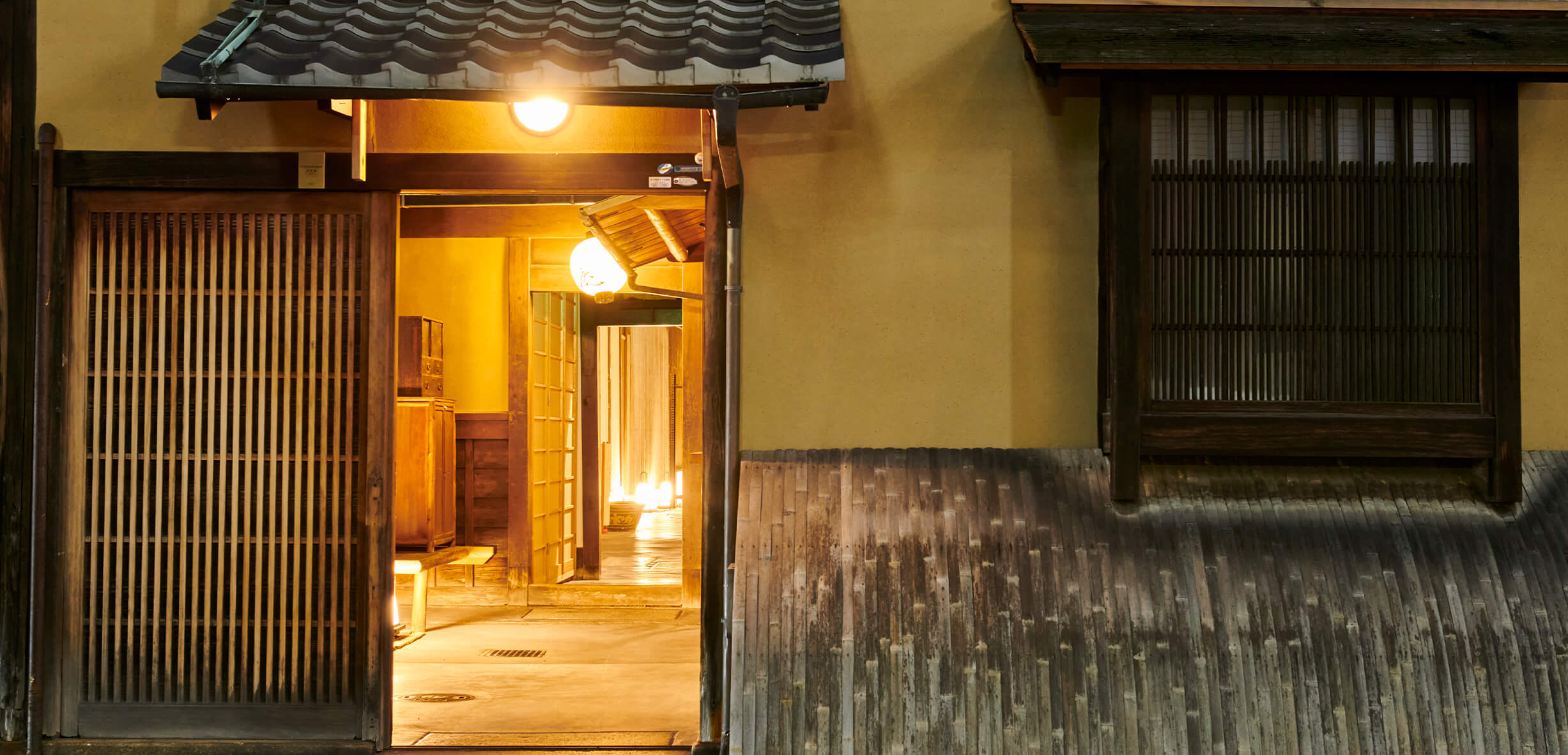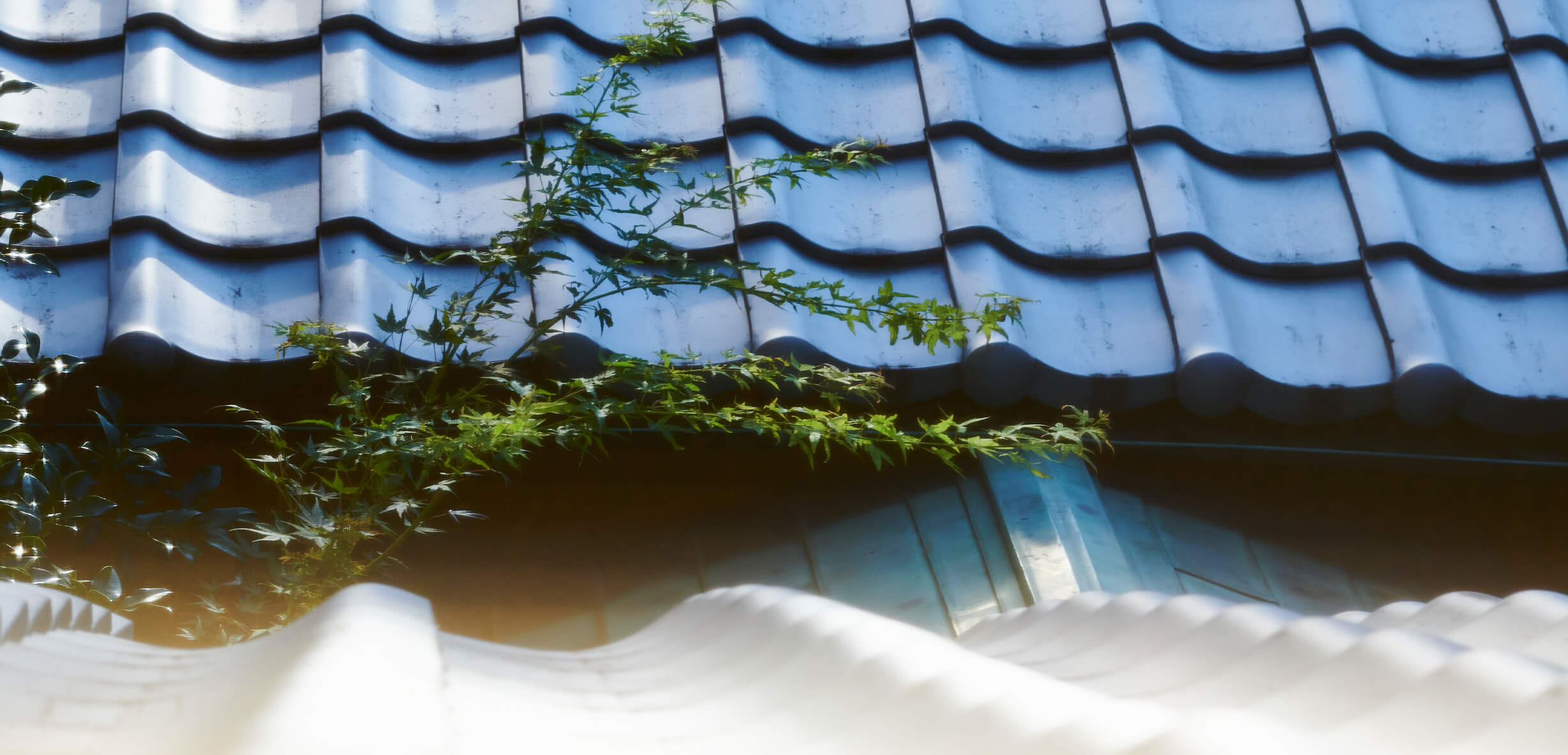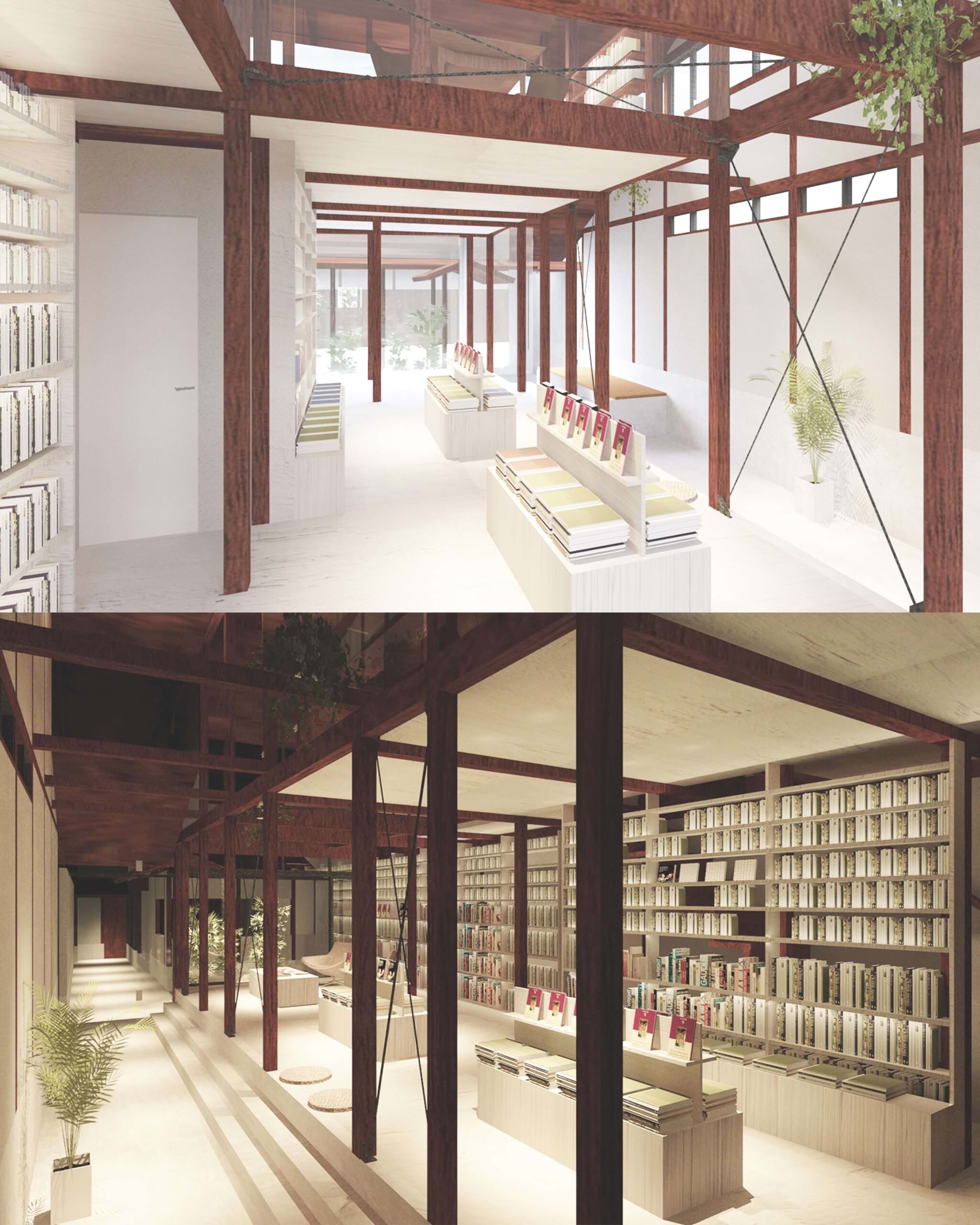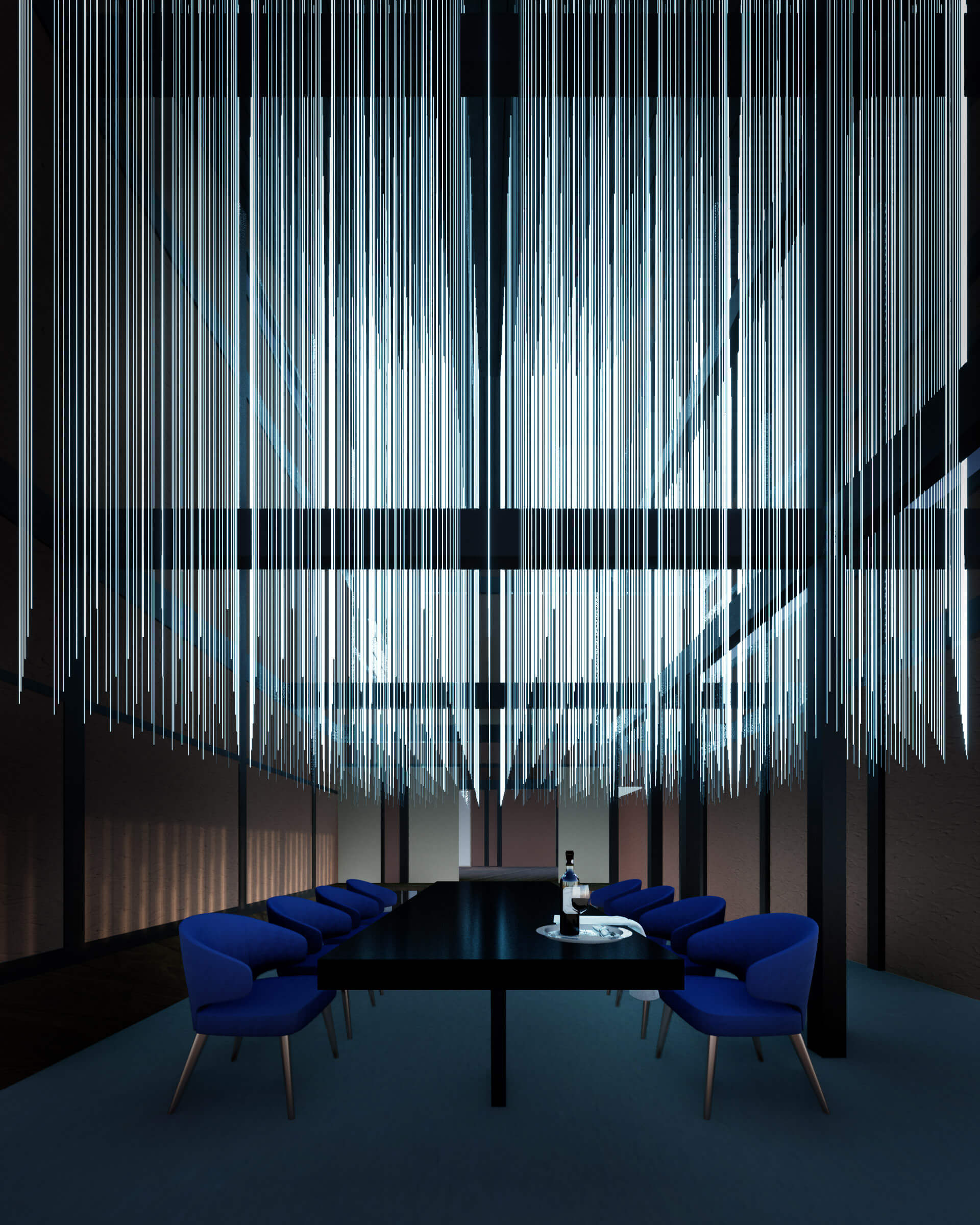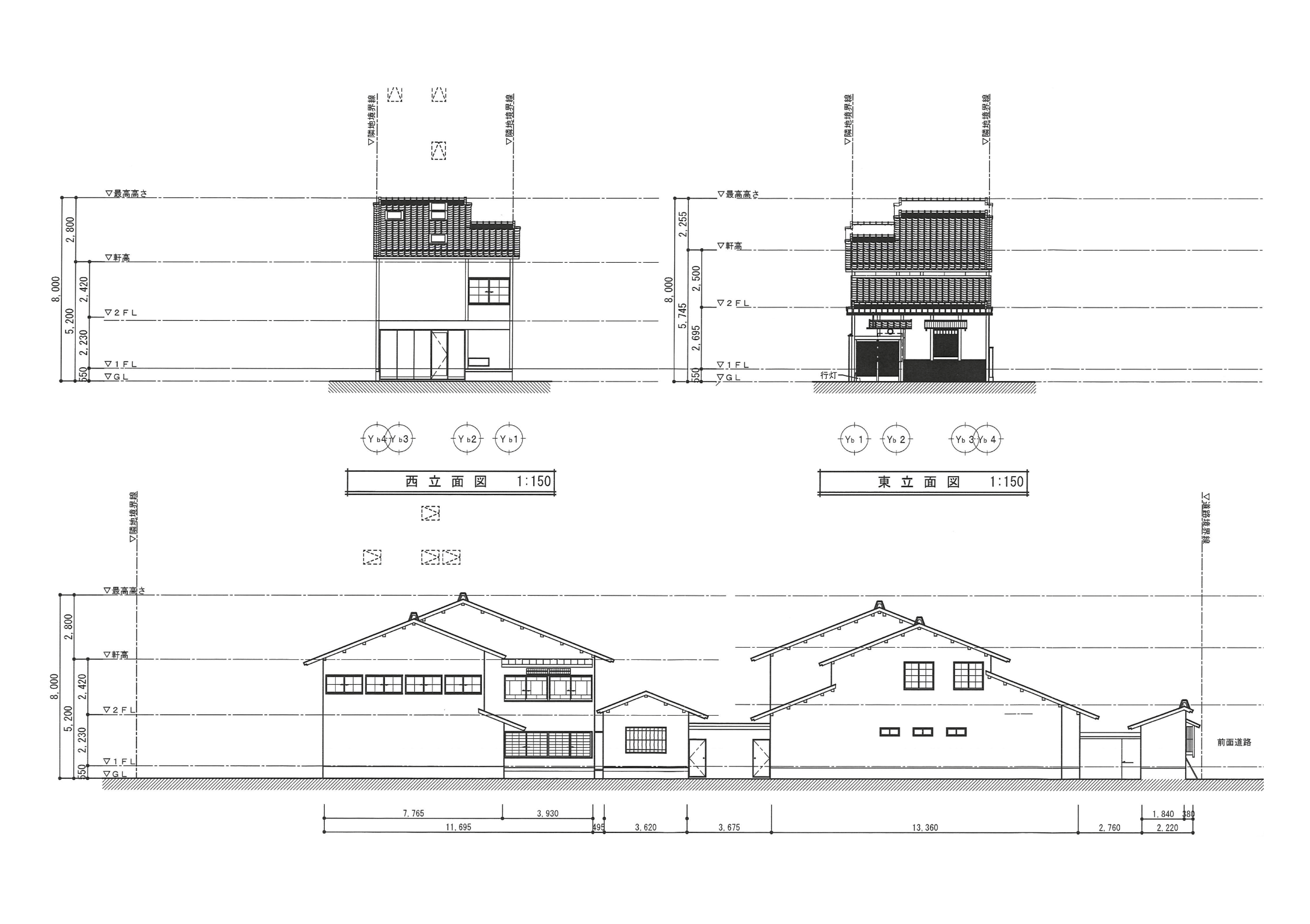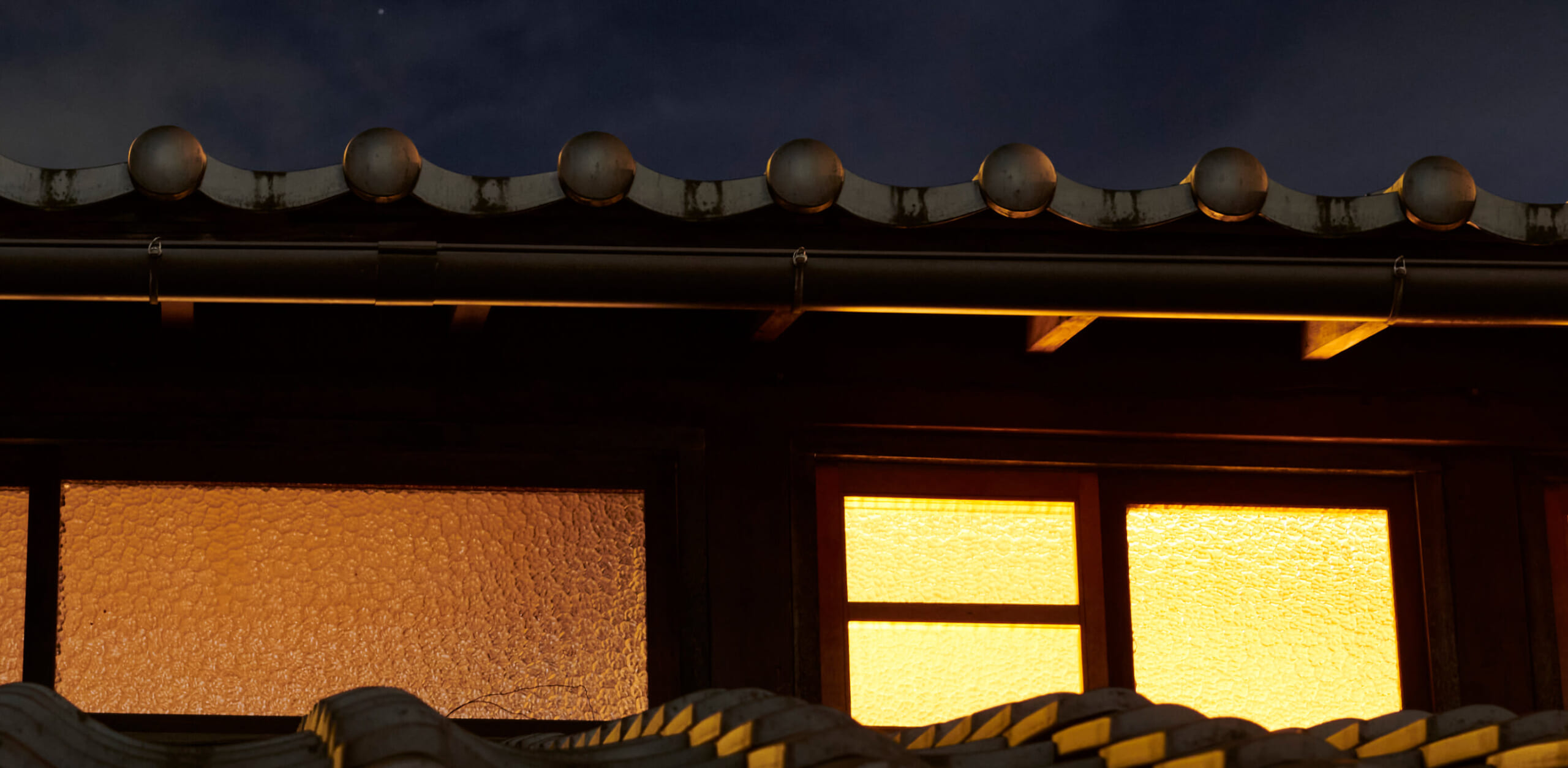
京都町家建筑的百年古宅
Tawara庵是将落成于明治30年(1897年)的京都町家古宅进行精心翻修的贵重建筑物。目前提供住宿服务,对外开放。
京都町家,是日本的千年古都·京都所特有的传统木造房屋样式。多为当年富商、名匠的居所,以京都为舞台的电影电视作品中总可以看到町家景色,是在日本广为人知的传统建筑。
町家样式的特征是,朝向通衢大道的正面入口都很狭小。一轩轩小而精致的町家鳞次栉比,是京都最具代表性的景色之一。而揭起门帘走进町家,却会惊喜地发现内中别有洞天。小小入口与纵深的比例,给町家样式带来了“鳗鱼窝”的爱称。同时,每户町家的深处总会有一个不为外人所知的庭院。这种”君子慎独”的审美意识,也是京都人的千年传统。
往昔曾经遍布京都的町家,也随着年月逝去与城市发展大大减少,正在以每天2轩的速度不断湮没。
Tawara庵的第一位主人,是铸造艺术的一代名匠
建造Tawara庵的是铸造艺术家,秦藏六,从江户时代晚期开始以“藏六”为铭,代代相传的金属铸造匠人一族。初代秦藏六为明治天皇铸造了登基御玺和日本国玺而闻名天下。从中可知秦藏六一门在日本金属铸造艺术史上所占的重要地位。
据当今的第六代匠人介绍,自从第一、第二代秦藏六斥资修建了Tawara庵后,这里一直作为工坊兼住所,成为每一代秦藏六的本家祖屋。尽管百年风霜已给老宅添加了许多岁月痕迹,但名匠的审美观与慧眼所赏识的建材、工法都可谓是“真金白银”。其建筑艺术水平之高,甚至令负责翻修的当代匠人也瞠目结舌,叹为观止。
深藏不露之处也用尽良材的美学意识
翻修工程中我们首先发现的是,Tawara庵老宅的建筑材料巨细无遗,均是良材。现代装修工艺中固然也会使用到稀有木材,但为了尽量高效地展现其美丽纹路,
通常都是把高级实木削为薄片贴到胶合板表层再使用。与Tawara庵这样大量使用实木良材相比,湿度调节功能和年月痕迹所带来的美感自然是望尘莫及。
更为吃惊的是,连天花板上方或榻榻米垫木这些深藏不露之处,也不惜工本地使用了吉野杉、肥松等名贵实木。
Tawara庵老宅不仅选用的材料极为名贵,建筑工艺也是炉火纯青。将虬曲苍劲的百日红枝干嵌入和室内最重要景观之一,“床间”的门楣,或是一根钉子都没用却榫卯吻合历久不疏的栏杆扶手,还有以当时木工一根根亲手制作的“隐形钉”连结成的地板,处处可缅怀往昔名匠的心思与技艺。
进行翻修的时候,我们也注重最大限度保存这些富有历史文化魅力的建筑特色,在不影响老宅原有氛围与美感的前提下,精心修复受损部分,并引进了适合现代生活方式的设备。
京都的历史与文化相融、庙堂与市井交汇之地
Tawara庵所在地,处于日本皇室的祖屋“京都御所”正南,可谓京都中心,是一个富有众多魅力的地理位置。
首先,由于Tawara庵处于京都中心位置,清水寺、祗园、二条城、金阁寺、锦市场等久负盛名的观光名胜都在15分钟车程之内。附近的横街纵坊,交错如棋盘状,可窥见京都模仿中国洛阳、长安而建的历史一斑。这些街道中分布着多家米其林餐厅、历史悠久的点心铺和传统用品商铺,非常宜于散步探访。
此外,Tawara庵不仅附近有京都大学等多家高等学府,教育环境绝佳,距离京都市屈指的办公区“乌丸御池”也只需步行10分,是商旅下榻的上乘之选。
More than 100-year-old Kyoto townhouse
Tawara An Retreat is a renovated Kyoto townhouse built in 1897 during the Meiji Era. It is now operated as an inn.
Kyoto townhouses are traditional wooden houses. Originally, they were built as homes for merchants and craftsmen in Kyoto. Many of you may have seen them before, as they appear in all the movies set in Kyoto, without fail.
Characterized by their small entrances facing the main street, a row of cozy townhouses is one of the most recognizable images of Kyoto. When you pass through the traditional Japanese curtain covering the entrance, you will find that those houses are much deeper than you could imagine. They are so long that, because of their shape, they are sometimes called “eel beds.” Most of them also have a small garden out back. This shows off the aesthetic sense of those from Kyoto, who are known to care about details which may not be visible when viewed from the outside.
Kyoto townhouses once existed all over the city. But wars and city development have changed this. Even today two houses disappear every day.
The first owner was a leading foundry craftsman of the time.
Tawara An Retreat was built by foundry craftsman, Zouroku Hata. Since the end of the Edo Period, the name “Zouroku”, as well as his traditional casting techniques, were passed down from generation to generation. He is even known to have handled the Imperial and State Seals of the Meiji Emperor. The fact that Zouroku Hata was entrusted with such important items shows that he was an extraordinary craftsman.
According to the current Zouroku Hata (6th generation), it was likely the 1st or 2nd generation Zouroku who built Tawara An Retreat. Since then, generations of Zouroku Hata have used the house as a workshop and residence. Although it has certainly aged over the years, the materials and construction which met the aesthetic standards of top-notch craftsmen are authentic. Even the modern master craftsman in charge of the renovation was impressed.
The aesthetics of using the authentic materials, even in places people may not be able to see
The first thing we noticed was the luxurious use of unprocessed rare wood as “solid board.” Today the same kind of wood is sometimes used, but in most cases, it is sliced thinly and pasted onto plywood to be used as “sliced veneer.” There is wisdom in using beautiful wood grain effectively. Nothing matches this solid wood in terms of the attractive appearance brought on by humidity and age. What further surprised us was the high grade of solid natural wood used in places not usually visible, like ceiling boards and under tatami mats. First-class materials such as Yoshino Cedar and Fat Pine were freely used throughout the construction.
The craftsmanship of assembling such materials was also excellent. Floor pillars made of twisted crape myrtle, railings on the porch assembled without using a single nail, and floorboards fastened using hidden nails likely hand-made one by one by carpenters at the time.
During renovations, we repaired damage while leveraging the charm of the house as much as possible. While doing this, we also introduced facilities that fit the modern lifestyle. In doing so, we chose materials that best suited the original atmosphere and flavor of the house.
A Location where Kyoto’s History, Culture, Commerce, and Lifestyle are Intermingled
Tawara An Retreat is located just south of the Kyoto Imperial Palace, the emperor’s former residence. This location, in the center of Kyoto, has many attractions.
First of all, being located in the center of Kyoto, many popular tourist spots such as Kiyomizu Temple, Gion, Nijo Castle, Kinkakuji Temple, and Nishiki Market can be reached within 15 minutes by taxi. The surrounding area is a grid of small streets, lined with Michelin-starred restaurants, long-established confectionery shops, and tool stores. This means you can even enjoy walking around the neighborhood. It is the perfect base for sightseeing in Kyoto.
Furthermore, Karasuma Oike, the largest office district in Kyoto, is only a 10-minute walk away, meaning it can even be considered for business use. Kyoto University and other famous universities are also located in the area, making it a perfect educational environment.
OUTLINE
- Address:
- 京都府京都市中京区俵屋町(富小路通)
- Tags:
-
- Address:
- Tawaraya-cho, Nakagyo-ku, Kyoto City (Tominokoji Street), Japan
- Site area:占地面积:
-
㎡0123456789012345678901234567890123456789
- Gross floor area:总建筑面积:
-
㎡0123456789012345678901234567890123456789
